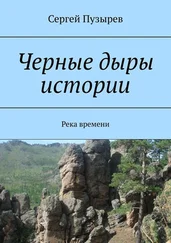Chandra and his students at Yerkes Observatory. In: G. Srinivasan (ed.). From White Dwarfs to Black Holes: The Legacy of S. Chandrasekhar (Chicago: University of Chicago Press, 1999), 199–237.
Who really coined the word supernova/Who first predicted neutron stars? Bulletin of the American Astronomical Society, 2001, 33, 1330–1331.
PAIS ABRAHAM. Inward Bound: On Matter and Forces in the Physical World (Oxford, Oxford University Press, 1986).
The Genius of Science: A portrait gallery of twentieth-century physicists (Oxford: Oxford University Press, 2000).
PAULI WOLFGANG. The influence of archetypal ideas on the scientific theories of Kepler. In: C. G. Jung and W. Pauli. The Interpretation of Nature and the Psyche (New York, Pantheon, 1955).
Wissenschaftlicher Briefwechsel mit Bohr, Einstein, Heisenberg, U. A. I: 1919–1929 (eds., A. V. Hermann, K.v.Meyenn, V. F. Weiskopf). (Berlin, Springer, 1979).
PAYNE-GAPOSCHKIN C. The Relative Abundances of the Elements. In: Stellar Atmospheres. Harvard Observatory Monograph, №.1 (Cambridge, MA: Harvard University Press, 1925).
Interview by Owen Gingerich, 5 March 1968, AIP.
AND KATHERINE HARAMUNDANIS. Introduction to Astronomy (Englewood Cliffs, NJ, Prentice-Hall, 1970).
PEIERLS RUDOLF. Note on the derivation of the equation of state for a degenerate relativistic gas. Monthly Notices of the Royal Astronomical Society, 1935–1936, 96, 780–784.
PELLAM, J.R. Lev Davidovich Landau. In: I. M. Khalatnikov. Landau: The Physicist and the Man (New York: Pergamon Press, 1989), 198–204.
PENROSE ROGER. Gravitational collapse and space-time singularities. Physical Review Letters, 1965,14,57–59.
Gravitational Collapse: the role of general relativity. Revista del Nuovo Cimento, Numero speciale, 1969, 1, 252–276.
PLASKETT HENRY H. Edward Arthur Milne. Monthly Notices of the Royal Astronomical Society, 1951, 111, 170–172.
PLUMMER H. C. Arthur Stanley Eddington. Obituary Notices of the Royal Society, 1948, 5, 113–125.
RAMAN C. V. The molecular scattering of light. Lecture delivered 11 December 1930. In: Nobel Lectures in Physics, 1922–1941 (New York, Elsevier, 1965), 267–275.
RAMASESHAN S. S. Chandrasekhar and C. V. Raman — some letters. Current Science, 1996, 70, 104–107.
Chandrasekhar — some reminiscences. In: K. C. Wali (ed.). S. Chandrasekhar: The Man Behind the Legend (London, Imperial College Press, 1997), 101–102.
REES MARTIN. Reminiscing about Chandra’s research. In: K.C. Wali (ed.). S. Chandrasekhar: The Man Behind the Legend (London. Imperial College Press, 1997), 183–186.
Astrophysical evidence for black holes. In: R.W. Wald, (ed.). Black Holes and Relativistic Stars (Chicago, University of Chicago Press, 1998), 79-101.
RHODES RICHARD. The Making of the Atomic Bomb (New York, Simon & Schuster, 1986).
Dark Sun: The Making of the Hydrogen Bomb (New York, Simon&Schuster, 1995).
ROSENFELD LEON. Nuclear physics, past and future. In: M. Neve de Mevergnies, P. Van Assche and J. Vervier (eds.). Nuclear Structure Study with Neutrons (Amsterdam: North Holland, 1996).
Niels Bohr in the thirties. In: S. Rozenthal (ed.), Niels Bohr: His Life and Work as Seen by His Friends and Colleagues (New York, Wiley, 1967), 114–136.
RÜGER ALEXANDER. Atomism from cosmology: Erwin Schrodinger’s work on wave mechanics and space-time structure. Historical Studies in the Physical Sciences, 1988, 18, 377–401.
RÜSSELL HENRY NORRIS. Giant and dwarf stars. The Observatory, 1913, 36, 325.
Relations Between Spectra and Other Characteristics of Stars. Popular Astronomy, 1914, 22, 275–294.
The Problem of stellar evolution’, Nature, 1925, 116, 209–212. Address. In: Conferences du College de France, Colloque International d’Astrophysique, 17–23 juillet 1939 (Paris: Hermann, 1941), 1–6.
Arthur Stanley Eddington, 1882–1944. Astrophysical Journal, 1945, 101, 133–135.
SAHA MEGHNAD. Ionisation in the solar chromosphere. Philosophical Magazine, 1920, 40, 479–488.
SAKHAROV ANDREI. Memoirs (New York, Knopf, 1990).
SALPETER EDWIN E. Energy and pressure of a zero-temperature plasma. Astrophysical Journal, 1961, 134, 669–682.
Neutron stars before 1967 and my debt to Chandra. In: G. Srinivasan (ed.). From White Dwarfs to Black Holes: The Legacy of S. Chandrasekhar (Chicago, University of Chicago Press, 1999), 27–29.
SANDAGE ALLAN R. and Martin Schwarzschild. Inhomogeneous Stellar Models II: Models with Exhausted Cores in Gravitational Contraction. Astrophysical Journal, 1952, 116, 463–476.
SCHMIDT MAARTEN. A star-like object with large red-shift. Nature, 1963, 197, 1040.
SCHÖDEL R., et.al. A star in a 15.2-year orbit around the supermassive black hole at the centre of the Milky Way. Nature, 2002, 419, 694–696.
SCOTT DAVID R., Alexei Leonov, Christine Toomey. Two Sides of the Moon: Our Story of the Cold War Space Race (New York, Simon & Schuster, 2004).
SERBER ROBERT. The Los Alamos Primer (Berkeley, CA, University of California Press, 1992).
SINGH AMAR KUMAN. Indian Students in Britain: A Survey of Their Adjustment and Attitudes (London, Asia Publishing House, 1963).
SINGH SIMON. Big Bang: The most important scientific discovery of all time and why you need to know about it (London, Fourth Estate, 2004).
SLATER GILBERT. Southern India: Its Political & Economic Problems (London, George Allen & Unwin, 1936).
SMART W.G.M. Excerpt from the Meeting of the Royal Astronomical Society, 9 January 1931. The Observatory, 1931, 54, 38.
SOMMERFELD ARNOLD. Atomic Structure and Spectral Lines. (London, Methuen, 1923).
Zur Elektronentheorie der Metallen auf Grund der Fermischen Statistik. Zeitschrift für Physik, 1928. 47, 1-32.
Zur Elektronentheorie der Metallen auf Grund der Fermischen Statistik, insbesondre über den Volta-Effekt. Zeitschrift für Physik, 1928, 47, 38–60.
STONER EDMUND C. The limiting density in white dwarf stars. Philosophical Magazine, 1929, 7, 63–70.
The equilibrium of dense stars. Philosophical Magazine 1930, 9, 944–963.
The minimum pressure of a degenerate gas. Monthly Notices of the Royal Astronomical Society, 1932, 92, 651–661.
Upper limits for densities and temperatures in stars. Monthly Notices of the Royal Astronomical Society, 1932, 92, 662–676.
STRÖMGREN BENGT. The opacity of stellar matter and the hydrogen content of the stars. Zeitschrift für Astrophysik, 1932. 4, 118–152.
On the interpretation of the Hertzsprung-Russell-diagram. Zeitschrift für Astrophysik, 1932,7,222–248.
Interview by Lillian Hoddeson and Gordon Baym, 6 May and 13 May 1976, AIP.
STRUVE OTTO AND VELTA ZEBERGS. Astronomy of the Twentieth Century (New York, Macmillan, 1962).
STUEWER ROGER H. Gamow’s Theory of Alpha Decay’. In: Edna Ullman-Margalit (ed.). The Kaleidoscope of Science (Englewood Cliffs, NJ, Humanities Press, 1986).
SWERDLOW NOEL M. Chandrasekhar’s research on Newton’s Principia. In: K.C. Wali (ed.). S. Chandrasekhar, The Man Behind the Legend (London, Imperial College Press, 1997), 201–205.
TELEGDI VALENTIN. Recollections About Chandra. In: К. C. Wali (ed.). The Man Behind the Legend (London, Imperial College Press, 1997), 206–209.
TEUKOLSKY SAUL A. Chandra at Caltech. In: K.C. Wali (ed.). S. Chandrasekhar. The Man Behind the Legend (London, Imperial College Press, 1997), 76–79.
THORNE KIP. Black Holes and Time Warps: Einstein’s Outrageous Legacy (News York, Norton, 1994).
Probing black holes and relativistic stars with gravitational waves. In: R.M. Wald (ed.). Black Holes and Relativistic Stars (Chicago, University of Chicago Press, 1998), 41–78.
ULAM STANISLAW. Adventures of a Mathematician (New York, Scribner’s, 1976).
Читать дальше
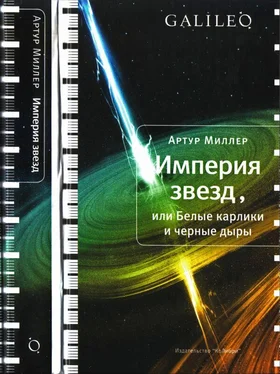
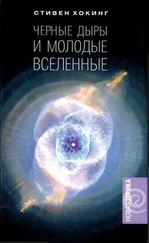

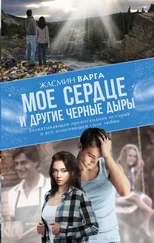
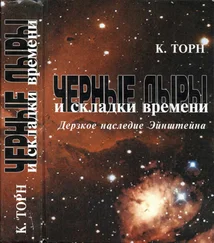

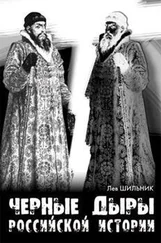

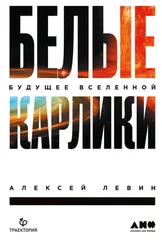
![Стивен Хокинг - Черные дыры. Лекции BBC [litres]](/books/402420/stiven-hoking-chernye-dyry-lekcii-bbc-litres-thumb.webp)
![Владимир Мазья - 007 и черные дыры [litres]](/books/438187/vladimir-mazya-007-i-chernye-dyry-litres-thumb.webp)
